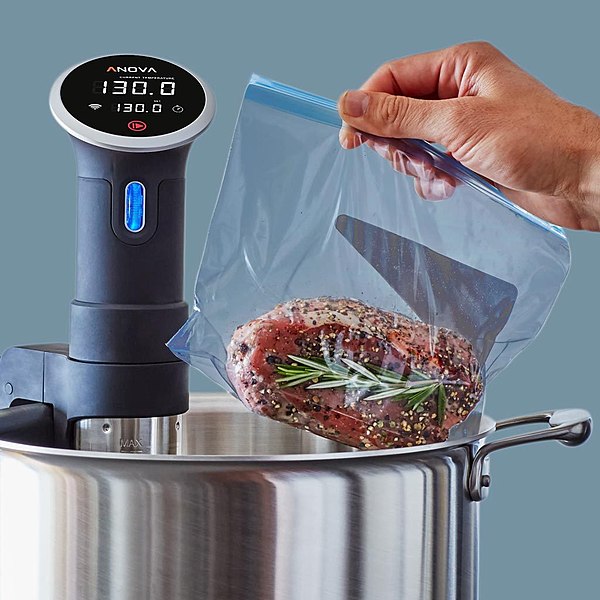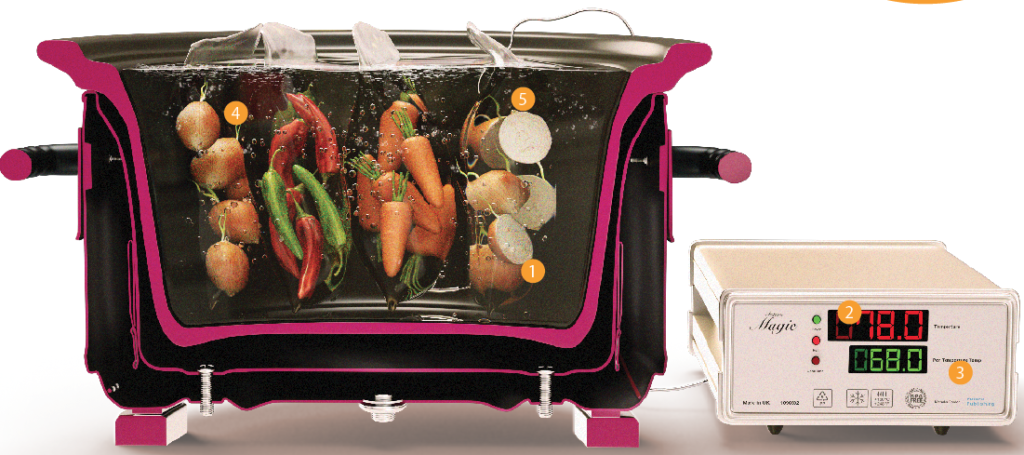Culinary Science: How does sous vide work?
by Scott Dutfield · 11/06/2019

Image credit: Anova Culinary
To ensure their food is cooked to perfection, many top chefs use a method called sous vide, which is French for ‘under vacuum’. It involves sealing raw ingredients in vacuumed pouches and then placing them in a water bath heated to a precise temperature. This cooks the food evenly from edge to edge, maintaining moisture and tenderness in the centre while preventing the outsides from being overdone.
Despite the name, vacuum sealing isn’t actually vital for sous vide, as temperature control is more important. However, it does have certain benefits. Sealing the food allows for more efficient heat transfer from the water and retains moisture and flavour during cooking. It also inhibits off-flavours that can occur when food is exposed to oxygen in the air. It’s a process thought to date back to 1799.

Water transfers heat more efficiently than air, so food can be cooked at lower temperatures.
Cooking at low temperatures means the cell walls in food do not burst, providing a higher level of succulence.
Precise temperature control ensures proteins, such as fish, chicken and eggs, are cooked to perfection.
Cooking at exact temperatures and times ensures the food is safe to eat and determines expected shelf life.
When cooking vegetables, low temperatures ensure they are cooked thoroughly but maintain a crisp texture.
This article was originally published in How It Works issue 101, written by Jo Stass
For more science and technology articles, pick up the latest copy of How It Works from all good retailers or from our website now. If you have a tablet or smartphone, you can also download the digital version onto your iOS or Android device. To make sure you never miss an issue of How It Works magazine, subscribe today!




